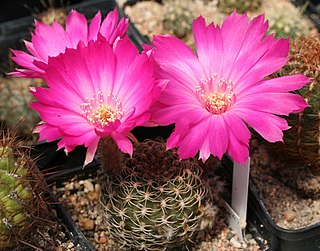
Lobivia backebergii is a species of flowering plant in the cactus family Cactaceae, native to eastern Bolivia and southern Peru.

Cleistocactus tominensis is a species of columnar cactus in the genus Cleistocactus, endemic to Bolivia, where it is found in forests, on cliffs, and in inter-Andean valleys at altitudes of 900 to 2,200 meters.
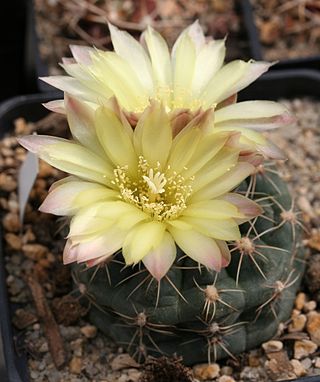
Gymnocalycium andreae is a species of Gymnocalycium from Argentina.

Acanthocalycium thionanthum is a species of Acanthocalycium from Argentina.
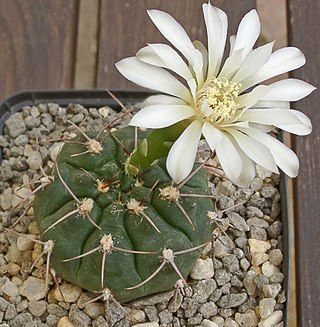
Gymnocalycium ochoterenae is a species of Gymnocalycium from Argentina.

Oreocereus trollii, commonly known as the Old Man of the Andes cactus, is a species of cacti native to Argentina and Bolivia. Though listed as Least Concern by the IUCN, the plant is collected extensively, and in some areas is threatened.

Lobivia ancistrophora is a species of cactus. It has a globular shape, few spines, with large, white flowers attached to long, green tubes. It occurs in Bolivia, at altitudes of 600–1800 metres. Under its synonym Echinopsis ancistrophora it has gained the Royal Horticultural Society's Award of Garden Merit.

Echinopsis densispina, is a species of Echinopsis found in Argentina.
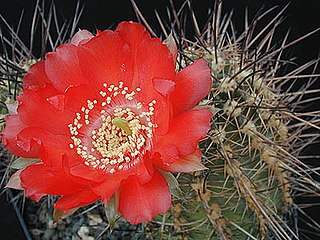
Echinopsis haematantha, is a species of Echinopsis found in Argentina and Bolivia.

Lobivia ferox, is a species of Lobivia found in Bolivia and Argentina.
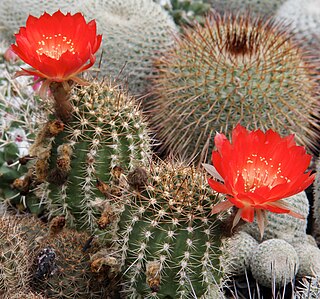
Lobivia hertrichiana, is a species of Lobivia found in Bolivia and Peru.

Lobivia pentlandii, is a species of Lobivia found in Bolivia and Peru.

Lobivia tiegeliana, is a species of Lobivia found in Argentina and Bolivia.

Echinopsis chrysantha, is a species of Echinopsis found in Argentina.
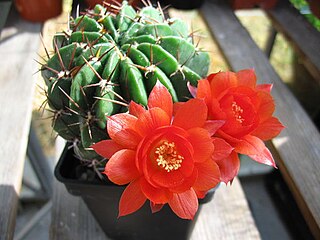
Lobivia maximiliana, is a species of Lobivia found in Bolivia and Peru.

Haageocereus versicolor is a species of Haageocereus found in Peru.
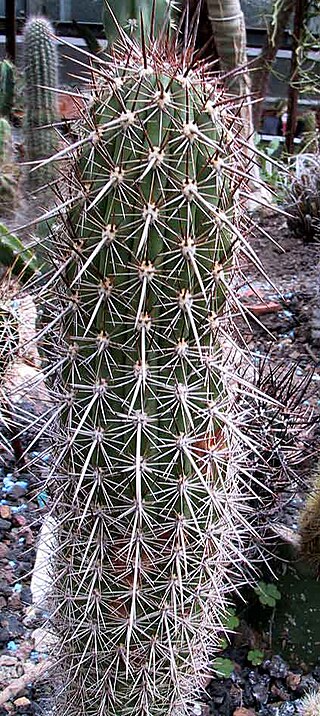
Haageocereus platinospinus is a species of Haageocereus found in Peru.

Echinopsis marsoneri is a species of cactus from Argentina and Bolivia.
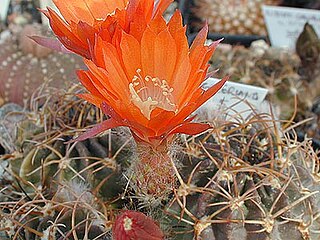
Lobivia tegeleriana is a species of Lobivia found in Peru.
Lobivia pugionacantha, is a species of Lobivia found in Argentina and Bolivia.




















